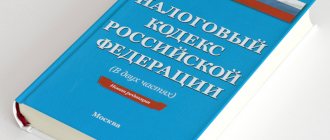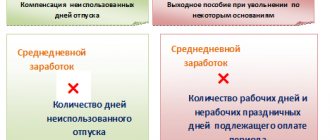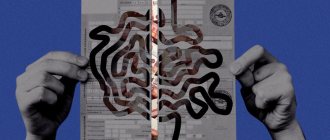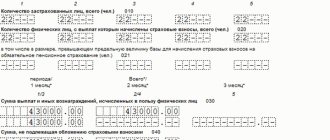Writing off fuel and lubricants as expenses is impossible without their documentary confirmation. The main document that performs this function is the waybill, but it is not the only way to record the costs incurred in accounting. Organizations that are not transport organizations can use other documents that meet the requirements of Federal Law 402 “On Accounting”. about in what cases it is possible to record fuel and lubricants WITHOUT waybills and how to do it correctly.
What are the required details of travel documents ?
How are regulations regulated?
A vehicle requires fuel to operate. Each category of car requires different volumes of fuel and lubricants. The Ministry of Transport has developed a special standard - this is the fuel consumption rate for car brands. The standard allows you to determine how much fuel and lubricants a specific brand of vehicle requires to support the technological process. The standards are developed only in relation to the operating process of vehicles. For example, it is unacceptable to use values to calculate the write-off of fuel and lubricants during repair, adjustment or testing. For technological purposes, additional fuel consumption standards (FLC) should be established.
The Ministry of Transport introduced the standards by a separate Order No. AM-23-r dated March 14, 2008 (as amended on September 20, 2018). The document establishes several categories of standards for fuel and fuel consumption:
- Basic standard for gasoline consumption in liters per 100 km in running order.
- Transport standard in liters per 100 km in operation (during transport work), including:
- cost standard for a bus taking into account curb weight and nominal passenger load;
- consumption standard for dump trucks, taking into account equipment and nominal vehicle load.
- Transport standard for a truck in liters per 100 ton-kilometers, determined during transport work.
Standards are set in liters, for example, for gasoline or diesel fuel. Or the standards are fixed in cubic meters if, for example, transport consumes gas.
What determines the value of the fuel and lubricants indicator?
Recommended by the Ministry of Transport of the Russian Federation or independently developed by the enterprise, fuel write-off standards depend on objective factors:
- type of transport (passenger car, truck, truck, special purpose vehicle, etc.);
- specific car brand;
- its mileage;
- the period during which the car is in operation;
- basic fuel consumption;
- some established coefficients - seasonal, territorial, road, load-lifting, etc.
Is it possible to develop individual standards?
Whether or not to use the standards of the Ministry of Transport in your work is the decision of the company’s management. That is, at the legislative level there are no requirements for the mandatory use of NRT.
The Tax Code does not require standardization of costs for fuels and lubricants either according to the corporate income tax or under the simplified tax system. A similar position is supported by the Ministry of Finance (Letters dated March 22, 2019 No. 03-03-07/19283, dated September 27, 2018 No. 03-11-11/69335). Each organization must make its own decision about working with fuel standards.
Cost standards are allowed to be developed independently. For example, an institution, based on the recommendation of the Ministry of Transport, approves its own standards. The indicators correspond to the real characteristics of vehicles used in the process of life.
The ministry's recommendations are just standard values calculated based on the general characteristics of car brands. Despite the correction factors, in practice the values differ significantly from the actual costs. Therefore, organizations have the right to approve their own indicators.
Approve standard values by local order.
Write-off of gasoline using waybills (tax accounting)
If everything is quite simple with the write-off of fuel and lubricants in accounting, then the recognition of these expenses in tax accounting raises questions.
1st question: in what expenses should fuel and lubricants be taken into account? There are 2 options here: material or other expenses. According to sub. 5 p. 1 art. 254 of the Tax Code of the Russian Federation, fuels and lubricants are included in material costs if they are used for technological needs. Fuel and lubricants are included in other expenses if they are used to maintain official vehicles (subclause 11, clause 1, article 264 of the Tax Code of the Russian Federation).
IMPORTANT! If the main activity of an organization is related to the transportation of goods or people, then fuel and lubricants are material costs. If vehicles are used as service vehicles, then fuel and lubricants are other expenses.
The second question: should we normalize the costs of writing off fuel and lubricants within the framework of tax accounting? The answer to this can be found by linking the details of the waybill and legislative norms:
- The PL calculates the actual use of fuel and lubricants. The Tax Code of the Russian Federation does not contain direct indications that expenses for fuel and lubricants should be taken into tax accounting only according to actual standards.
- The PL contains information only about the actual mileage. However, fuels and lubricants can be calculated according to order No. AM-23-r, paragraph 3 of which states that the standards established by it are also intended for tax calculations. The Ministry of Finance of Russia in its letters (for example, dated 03/22/2019 No. 03-03-07/19283, dated 06/03/2013 No. 03-03-06/1/20097) confirms that order No. AM-23-r can be used to establish justification of costs and determine the cost of fuel and lubricants in tax accounting according to standards multiplied by mileage.
IMPORTANT! In tax accounting, fuels and lubricants can be taken both according to actual use and according to the quantity calculated based on the standards.
In practice, a situation is possible when an organization uses transport for which fuel consumption standards are not approved in Order No. AM-23-r. But in paragraph 6 of this document there is an explanation that an organization or individual entrepreneur can individually (with the help of scientific organizations) develop and approve the necessary standards.
The position of the Ministry of Finance of Russia (see, for example, letter dated June 22, 2010 No. 03-03-06/4/61) is that before developing standards for the write-off of fuel and lubricants in a scientific organization, a legal entity or individual entrepreneur can be guided by technical documentation.
There are no explanations in the Tax Code of the Russian Federation on how to act in such a situation. In cases where an organization independently established standards for writing off fuel and lubricants and, having exceeded them, took into account the amount of excess fuel use in tax accounting, the tax inspectorate may not recognize this as an expense. Accordingly, additional income tax may be charged. In this case, the court may well support the position of the inspectorate (see, for example, the resolution of the Administrative Court of the North Caucasus District dated September 25, 2015 in case No. A53-24671/2014).
Read about the amount of fines for not having a waybill in this article .
How to count
Officials identified three main concepts:
| Basic NRT | This is the standard cost of fuel and lubricants. Installed separately for each brand of vehicle. Takes into account individual designs, curb weight, type of fuel consumed and other characteristics. The type of flow is applicable for standard, typified situations. |
| Transport NZT | This type of regulatory use is applied taking into account the characteristics of the transport operation of the unit. In essence, this is a basic standard, recalculated taking into account the carrying capacity, towing force, and the rated load of cargo or passengers. That is, a standard taking into account the performance characteristics of the car. |
| Operational NRT | This is a real cost standard, which is recalculated taking into account correction factors. These are basic and transport NRT, which take into account the operating conditions of the vehicle (terrain, climate, temperature conditions and other operating features). |
Each of the standard values is recalculated in relation to the base value, taking into account correction factors. A detailed table of fuel consumption standards for 2021 reveals values by car brand. Abbreviations in the table:
- B - gasoline;
- D - diesel fuel;
- LPG - liquefied petroleum gas;
- CNG is compressed natural gas.
| Model, brand, modification of the car | Basic rate, l/100 km | Type of fuel |
| VAZ-1111 "Oka" | 6,5 | B |
| VAZ-11113 "Oka" (VAZ-11113-2L-0.75-35-4M) | 5,6 | B |
| VAZ-11183 "Kalina" (VAZ-21114-4L-1,596-81-5M) | 8,0 | B |
| VAZ-2104 | 8,5 | B |
| VAZ-21041 (VAZ-21067.10-4L-1,568-74,5-5M) | 9,1 | B |
| VAZ-21043 (VAZ-2103-4L-1.45-71-5M) | 8,3 | B |
| VAZ-21043 (VAZ-2103-4L-1,451-71,5-4M) | 9,0 | B |
| VAZ-2105, -21051, -21053 | 8,5 | B |
| VAZ-2106 (VAZ-2106-4L-1.57-75.5-5M) | 8,5 | B |
| VAZ-2106 (VAZ-2106-4L-1.57-75.5-4M) | 9,0 | B |
| VAZ-21061 | 9,0 | B |
| VAZ-21063 (VAZ-2130-4L-1.77-82-5M) | 9,0 | B |
| VAZ-2107 (VAZ-2103-4L-1.45-72.5-4M) | 8,6 | B |
| VAZ-21072 (VAZ-2105-4L-1.3-63.5-4M) | 8,9 | B |
| VAZ-21074 (VAZ-2106-4L-1.57-75.5-5M) | 8,5 | B |
| VAZ-21074 (VAZ-21067-4L-1,568-74,5-5M) | 8,9 | B |
| VAZ-2108, -2108 “Sputnik”, -21081, -21083, -2109 | 8,0 | B |
| VAZ-21093 (VAZ-2111-4L-1,499-79-5M) | 7,7 | B |
| VAZ-21093; -21099 1.5i (VAZ-21083-20-4L-1.5-71-5M) | 7,5 | B |
| VAZ-21099 (VAZ-2111-4L-1,499-79-5M) | 7,8 | B |
| VAZ-2110 1.5i (VAZ-21083-20-4L-1.5-71-5M) | 7,4 | B |
| VAZ-2110-010 (VAZ-2110-4L-1,499-73-5M) | 7,8 | B |
| VAZ-21102 (VAZ-2111-4L-1,499-79-5M) | 7,5 | B |
| VAZ-21103 (VAZ-2112-4L-1,499-92-5M) | 7,7 | B |
| VAZ-21104 (VAZ-21124-4L-1,596-90-5M) | 8,4 | B |
| VAZ-2111 (VAZ-2111-4L-1,499-79-5M) | 7,6 | B |
| VAZ-21112-00 1.6 (VAZ-21114-4L-1,596-80-5M) | 8,3 | B |
| VAZ-21113 (VAZ-2112-4L-1,499-92-5M) | 7,8 | B |
| VAZ-2112 (VAZ-2112-4L-1,499-92-5M) | 7,7 | B |
| VAZ-21140 (VAZ-2111-4L-1,499-79-5M) | 7,9 | B |
| VAZ-21150 (VAZ-2111-4L-1,499-79-3,94-5M) | 7,4 | B |
| VAZ-2120 (VAZ-2130-4L-1,774-82-5M) | 10,7 | B |
| VAZ-212090 "Bronto" armor. (VAZ-2130-4L-1,774-82-5M) | 12,5 | B |
| VAZ-2121, -21211 | 12,0 | B |
| VAZ-21213 (VAZ-21213-4L-1,690-80-5M) | 11,5 | B |
| VAZ-21213B armor. (VAZ-21213-4L-1.69-79-5M) | 12,1 | B |
| VAZ-21214-20 “Chevrolet Niva” (VAZ-21214.10-4L-1,689-82-5M) | 10,9 | B |
| VAZ-21218 (VAZ-21213-4L-1.69-79-5M) | 11,9 | B |
| VAZ-212182 armored (VAZ-21213-4L-1.69-79-5M) | 12,3 | B |
| VAZ-212300 "Chevrolet Niva" (VAZ-2123-4L-1.69-80-5M) | 10,5 | B |
| VAZ-2131 (VAZ-21213-4L-1.69-80-5M) | 11,3 | B |
| VAZ-21310 (VAZ-2130-4L-1,774-82-5M) | 11,5 | B |
| VAZ-213102 "Bronto" armor. (VAZ-2130-4L-1,774-80-5M) | 12,4 | B |
| VAZ-21312 (VAZ-2130-4L-1,774-82-5M) | 11,4 | B |
| VAZ-2302 “Bison” (VAZ-2121-4L-1.57-78-4M) | 11,5 | B |
| GAZ-13 | 20,0 | B |
| GAZ-14 | 22,0 | B |
| GAZ-24, -24-10, -24-60 | 13,0 | B |
| GAZ-24-01, -24-03, -24-11, -24-14, -24T | 13,5 | B |
| GAZ-24-02, -24-04 | 14,0 | B |
| GAZ-24-07 | 16,5 | CIS |
| GAZ-24-12, -24-13 (with engine ZMZ-402, -402.10) | 13,5 | B |
| GAZ-24-12, -24-13 (with engine ZMZ-4021, -4021.10) | 14,0 | B |
| GAZ-24-17, -24-25 | 16,5 | CIS |
| GAZ-3102 (with engine ZMZ-4022.10) | 13,0 | B |
| GAZ-3102 (Chrysler-4L-2,429-137-5M) | 10,7 | B |
| GAZ-3102 (Toyota 3RZ-FE-4L-2,694-152-5M) | 11,2 | B |
| GAZ-3102, -3102-12 (ZMZ-4062.10-4L-2.3-150-4M) | 12,5 | B |
| GAZ-3102-12; GAZ-3102 (ZMZ-4062.10-4L-2.3-150-5M) | 12,0 | B |
| GAZ-310200 (Toyota-6V-3,378-194-4A) | 13,8 | B |
| GAZ-310200 (Rover-8V-3.95-182-5M) | 13,5 | B |
| GAZ-31022 (ZMZ-4021.10-4L-2,445-90-4M) | 13,9 | B |
| GAZ-310221 (ZMZ-40210D-4L-2,445-81-5M) | 13,1 | B |
| GAZ-310221 (ZMZ-40620D-4L-2.3-131-5M) | 11,5 | B |
| GAZ-31029 (Rover-4L-1,994-140-5M) | 11,5 | B |
| GAZ-31029 (ZMZ-402; 402.10 - 4L-2,445-100-4M) | 13,0 | B |
| GAZ-31029 (ZMZ-4021; 4021.10 - 4L-2,445-90-4M) | 13,5 | B |
| GAZ-3105 (8V-3.4-170-5M) | 13,7 | B |
| GAZ-3110 (ZMZ-4026.10; -40200F-4L-2,445-100-4M) | 13,0 | B |
| GAZ-3110 (Rover-4L-1,996-136-5M) | 10,7 | B |
| GAZ-3110 (ZMZ-4020 OM-4L-2,445-100-5M) | 12,2 | B |
| GAZ-3110 (ZMZ-4062.10-4L-2,287-150-5M) | 11,4 | B |
| GAZ-3110 (ZMZ-40210D; -4021-4L-2,445-90-5M) | 13,0 | B |
| GAZ-3110 (ZMZ-4026.10; -402-4L-2,445-100-5M) | 12,1 | B |
| GAZ-3110 (ZMZ-40620D-4L-2.3-131-5M) | 11,5 | B |
| GAZ-3110-551 (Chrysler-4L-2,429-137-5M) | 10,6 | B |
| GAZ-31105 (ZMZ-40620D-4L-2.3-131-5M) | 11,5 | B |
| ZAZ-1102 | 7,0 | B |
| ZIL-114 | 24,0 | B |
| ZIL-117 | 23,0 | B |
| ZIL-4104 | 26,0 | B |
| ZIL-41047 (8V-7.68-315-3A) | 26,5 | B |
| IZH-2125, -21251, -2126 | 10,0 | B |
| LuAZ-1302 | 11 | B |
| Moskvich-2136, -2140, -2141 (all modifications) | 10,0 | B |
| Moskvich-2141 “Yuri Dolgoruky” (Renault-4L-1,998-113-5M) | 8,6 | B |
| Moskvich-2141-22 (UZAM-3317-4L-1.7-85-5M) | 9,4 | B |
| Moskvich-2141-22 (UZAM-3320-4L-2.0-91-5M) | 9,6 | B |
| Moskvich-21412-01 (UZAM-331.10-4L-1,478-72-5M) | 8,5 | B |
| Moskvich-21412-01 (UZAM-3313-4L-1,815-85-5M) | 9,0 | B |
| Moskvich-214145 “Svyatogor” (Renault-4L-1,998-113-5M) | 8,8 | B |
| Moskvich-2142 “Prince Vladimir” (Renault-4L-1,988-113-5M) | 8,9 | B |
| Moskvich-2142 “Ivan Kalita” (Renault-4L-1,988-145-5M) | 10,2 | B |
| UAZ-31512 (ZMZ-4025.10-4L-2.45-90-4M) | 15,5 | B |
| UAZ-31512 (ZMZ-40260F-4L-2,445-100-4M) | 15,4 | B |
| UAZ-31512 (UMZ-4178-4L-2,445-76-4M) | 15,1 | B |
| UAZ-31514 (ZMZ-4025.10-4L-2,445-90-4M) | 16,7 | B |
| UAZ-31514 (ZMZ-40210L-4L-2,445-81-4M) | 15,5 | B |
| UAZ-31514 (UMZ-41780V-4L-2,445-76-4M) | 15,8 | B |
| UAZ-31514 (UMZ-402100-4L-2,445-74-4M) | 15,6 | B |
| UAZ-31517 (HR 492 NTA -4L-2,393-100-4M) | 11,0 | D |
| UAZ-31519 (UMZ-4218.10-4L-2.89-98-4M) | 14,5 | B |
| UAZ-31519 (UMZ-4218-4L-2.89-84-4M) | 15,9 | B |
| UAZ-31519 (UMZ-4218-4L-2.89-98-4M) | 14,9 | B |
| UAZ-315195 (ZMZ-4090011-4L-2,693-128-5M) | 13,5 | B |
| UAZ-315195 Hunter (ZMZ-40900G-4L-2,693-128-4M) | 13,8 | B |
| UAZ-3153 SBA-4UM (armored) (UMZ-4218-10 -4L-2.89-98-4M) | 16,6 | B |
| UAZ-3153 (UMZ-4218-4L-2.89-84-4M) | 15,4 | B |
| UAZ-3159 “Bars” (ZMZ-4092.10-4L-2.7-133-5M) | 16,5 | B |
| UAZ-31601 (UMZ-421.10-10-4L-2.89-98-5M) | 15,3 | B |
| UAZ-31604 (VM-425LTRV-4L-2.5-105-5M) | 13,2 | D |
| UAZ-3162 SBA 10U (armored) (UMZ-421.10-4L-2.89-98-4M) | 16,0 | B |
| UAZ-31622 (ZMZ-4092.10-4L-2.69-130-5M) | 13,7 | B |
| UAZ-3163-10 “Patriot” (ZMZ-40900R-4L-2,693-128-5M) | 13,5 | B |
Simplification of accounting for fuel costs in 1C: Accounting 8
Starting from version 3.0.74 in “1C: Accounting 8” you can keep track of fuel using waybills. In order for the new feature to become available to the user, you will need to enable the corresponding functionality (section Main - Settings - Functionality). On the Inventory tab, you must set the Waybills flag (see Fig. 1). After enabling this setting, a new document appears in the program - Waybill.
Rice. 1. Setting up the program functionality
A waybill is issued for each vehicle. This document is used to substantiate fuel expenses for income tax purposes. The Waybill also indicates the amount of fuel that was purchased and consumed during the flight. In the full interface, the document is available in the Purchases section. In a simple interface - in the Documents section. Let's take a closer look at the new document.
Features of the new document “Waybill”
Using the Waybill document (Fig. 2) of the program, the user can:
- take into account information about the route of a passenger car that is used for business purposes. Moreover, this can be either the organization’s own car or a rented one, as well as personal transport belonging to an employee of the organization;
- reflect the purchase of fuel in cash or using a fuel card;
- take into account fuel consumption in the vehicle tank;
- take into account fuel costs in accounting and tax accounting (for profit tax purposes, when applying the simplified tax system with the object “income reduced by the amount of expenses”, as well as for the professional deduction of an individual entrepreneur when paying personal income tax).
- print the waybill according to the standard intersectoral form No. 3 (approved by Resolution No. 78) or in a simplified form;
- print an advance report in form AO-1 (approved by Resolution of the State Statistics Committee of the Russian Federation dated August 1, 2001 No. 55) - when purchasing fuel for cash.
Rice. 2. Document “Waybill”. Purchasing fuel using a cash receipt
Please note that the Waybill document has limitations: it can only be used by enterprises that are not transport companies and for which transportation is not their main activity. In addition, the Waybill does not support fuel accounting using coupons for fuel and lubricants. If the organization’s activities do not use passenger cars, refueling “in a can” is practiced, coupons for fuels and lubricants are used, and the fuel is stored in different warehouses, then accounting for fuels and lubricants should be carried out according to the previous (“traditional”) scenario. The methodology for accounting for fuel using waybills required changes to the program.
Changes in 1C:Accounting 8 to automate cost accounting for waybills
As part of the automation of accounting for fuel costs using waybills in 1C: Accounting 8, starting from version 3.0.74, the following changes have occurred:
- Third order subaccounts have been added to account 10.03 “Fuel”:
- 10.03.1 “Fuel in warehouse”;
- 10.03.2 “Fuel in the tank.”
Subaccount 10.03.1 takes into account the availability and movement of petroleum products and lubricants intended for the operation of vehicles, technological needs of production, energy generation and heating, solid and gaseous fuels. Analytical accounting is maintained by item, storage location and batch (receipt document). Each name is an element of the Nomenclature directory. Each storage location is an element of the Warehouses directory. To maintain analytical accounting for warehouses and batches, you must make the appropriate settings for accounting parameters (section Main - Chart of Accounts - Setting up a chart of accounts - Inventory accounting). Subaccount 10.03.1 is the “successor” of account 10.03, used in previous versions of the program, and is used in “traditional” scenarios for working with fuels and lubricants. Subaccount 10.03.2 takes into account the presence and movement of petroleum products in the vehicle tank. Analytical accounting is carried out by fuel types and vehicles. Each name is an element of the Nomenclature directory. Each car is an element of the Vehicles directory.
- A new subaccount 76.15 “Purchases using fuel cards” has been added to account 76 “Settlements with various debtors and creditors”. This sub-account is intended for quantitative accounting of payments for fuel purchased by an organization using fuel cards in the currency of the Russian Federation. Analytical accounting is carried out for individual types of fuel (subconto Nomenclature) and cars (subconto Vehicles).
- A new program object has appeared - Vehicle (an element of the Vehicles directory), which can be accessed from the Directories - OS and Intangible Materials section. If a car is accounted for in an organization as a fixed asset (FPE), then the Vehicle (Fig. 3) is created automatically when the vehicle is registered with the Federal Tax Service (fixed asset card - link Register), since the Register entry of a vehicle contains all necessary information. Rented cars and personal vehicles of employees used for business purposes should be entered manually in the Vehicles directory;
- For the document Receipt (act, invoice), a new type of operation Fuel has appeared.
Rice. 3. Vehicle card
Calculation for passenger cars
For a passenger car, the standard is calculated using a special formula:
Qн = 0.01 × Hs × S × (1 + 0.01 × D),
Where:
- Qn is the fuel cost standard, calculated in liters;
- Hs is the basic standard of fuel consumption for a vehicle mileage of 100 km;
- S - specific mileage of the car, calculated in km;
- D - correction factor set to the standard, reflected in %.
The basic standard is determined in accordance with the recommendations of the table of standards for write-off of fuel and lubricants of the Ministry of Transport. For example, separate values are provided:
- for domestic transport until 2014;
- for foreign cars before 2008;
- for foreign brands from 2008 to 2014.
IMPORTANT!
Mileage accounting for calculating standard values is carried out exclusively on waybills. This is a special primary document required to be completed by organizations operating transport. Read about the form and rules for filling it out in the article “Instructions: filling out the waybill for a passenger car.”
Accounting for fuel and lubricants
Like all inventories, fuel and lubricants are accounted for in the accounting department at actual cost. Expenses that are included in the actual cost are indicated in section II of PBU 5/01.
Important! From 2021, PBU 5/01 replaces the new federal standard FSBU 5/2019 “Reserves”. ConsultantPlus experts spoke in detail about how the rules for accounting for inventories will change. You can see the explanations if you get trial access to the legal system. It's free.
Acceptance of fuel and lubricants for accounting can be carried out on the basis of gas station receipts attached to the advance report (if the driver purchased the fuel in cash) or on the basis of coupon stubs (if gasoline was purchased using coupons). If the driver purchases gasoline using a fuel card, then accounting for fuel and lubricants on fuel cards is carried out on the basis of a report from the company issuing the card. Write-off of fuel and lubricants can be carried out using the following methods (section III):
- at average cost;
- at the cost of the 1st time of acquisition of inventory (FIFO).
There is another way to write off - at the cost of each unit. But in practice, it is not applicable for writing off fuel and lubricants.
The most common way to write off fuel and lubricants is at average cost, when the cost of the remaining material is added to the cost of its receipt and divided by the total amount of the remainder and receipt in kind.
Calculation for buses
If the company operates buses in operation, then the standards will have to be calculated differently. To do this, use the following formula:
Qn = 0.01 × Hs × S × (1 + 0.01 × D) + Hot × T,
Where:
- Qн is the fuel and lubricants cost standard, calculated in liters;
- Hs - transport NT consumption, determined for a bus mileage of 100 km, calculated taking into account the passenger load normalized by class and purpose of the bus;
- S is the actual mileage of the bus, determined in km according to the waybill;
- Hoth - standard fuel and lubricant costs for the operation of standard independent heaters, calculated in l/h;
- T — actual operating time of the bus with the heater on, h;
- D—correction factor determined to the standard, %.
The actual mileage of the bus is confirmed by the waybill.
Accountant's procedure
The organization's materials are taken into account by the accountant and calculated based on their cost. These expenses and receipts are elements of the PBU 5/01 system. Acceptance of any raw materials into the accounting system is carried out taking into account the following documents:
- If fuel is purchased in cash, these are gas station receipts;
- Fuel coupons, if raw materials were purchased by bank transfer, taking into account the agreement between the supplier of raw materials and the receiving company.
There are situations when a driver refills his tank while on the road using a special card. Afterwards, the accountant needs to write off not only the gasoline poured at point A, but also calculate the amount of additional spent, knowing its cost and volumes on the map.
But, in general, adding additional fuel rarely occurs, and accountants work exclusively with waybills and write off specific volumes. Receipt balances are summed up and divided by the total balance on the day of registration.
Accounting
The entire accounting system consists of two important sections:
- Debit is income;
- Credit - Write-off (expense).
What is the calculation? To begin, calculate the amount of raw materials by multiplying this indicator by the cost of a unit of fuel from reserves. The result is written off according to the calculated values of each type of raw material.
Tax accounting
Generating waybills is not an easy task. It is necessary to determine the type of expenses and material costs. Inventory assets regulated by basic documents include: fuel, lubricants, oils, antifreeze. The rest, the movement of vehicles, are considered other expenses and are regulated by other documents.
Do I need to take expenses into account for tax purposes? The legislation does not say that 100% are recognized as mandatory and their actual use. The Ministry of Finance confirms that the amount of raw materials is calculated based on mathematical formulas in accordance with order No. AM-23-r.
All incoming raw materials, together with consumables, are calculated according to standard and actual values of consumption indicators. The order indicated above allows subjects and organizations to independently establish standards for the consumption of raw materials and a calculation system. For example, an organization that has independently developed expense norms and correctly documented them will not raise questions from the tax authorities, and the latter will not consider these values as expenses of the reporting period.
Calculation for trucks
For freight vehicles, the calculation procedure is more complicated. The calculation takes into account the weight of the cargo, the weight of the trailers, and other transportation characteristics. For dump trucks and tractors, standard values are calculated in a special order.
Formula for calculating the fuel consumption rate for a truck:
Qн = 0.01 × (Hsan × S + Hw × W) × (1 + 0.01 × D),
Where:
- Qn - standard fuel consumption in liters;
- S - mileage of a car or road train, determined in km;
- Hsan is the fuel consumption rate established for the mileage of a car or road train in running order without load.
The last Hsan indicator is calculated separately. To do this, use the formula:
Hsan = Hs + Hg × Gpr, l/100 km,
Where:
- Hs is the basic fuel consumption rate for the mileage of a car (tractor) in running order, l/100 km (Hsan = Hs, l/100 km, for a single car, tractor);
- Hg - fuel consumption rate for the additional weight of a trailer or semi-trailer, l/100 t. km;
- Gpr - trailer or semi-trailer own weight, t;
- Hw—fuel consumption rate for transport work, l/100 t. km;
- W is the volume of transport work, t. km: W = Ggr × Sgr (where Ggr is the mass of the cargo, t, Sgr is the mileage with the cargo, km);
- D — correction factor (total relative increase or decrease) to the norm, %.
Determine the actual mileage using the waybill. Details are in the article “Filling out a new waybill for a truck.”
Gvmp
Contents The enterprise should decide on the accounting method in order to be able to write off consumed fuel. As a rule, the driver refuels the vehicle himself using the funds allocated for these purposes, after which he submits an advance report to the accounting department of the enterprise.
He encloses a gas station receipt issued for the purchase of fuel from him.
The material accountant credits fuel to account 10 “Materials”.
The option of concluding an agreement with a vehicle refueling company to pay for fuel and lubricants non-cash using special cards cannot be ruled out.
At the end of the past month, the gas station provides complete information about the volume of fuel, its cost, which was supplied by it using the fuel card. Capitalization is carried out to account 10 by a material accountant or an individual account of the second order is opened. The consumed amount of fuel and lubricants is written off on the following accounts:
- 44 “Sales expenses”.
- 20 “Main production”;
- 26 “General business expenses”;
The choice of account remains with the enterprise, which must take into account the specifics of production activities, technical characteristics, make and model of individual vehicles.
In such a situation, fuel is written off based on the waybill filled out by the driver. It is among the primary documents.
It indicates the route, its total mileage, the amount of fuel at the beginning of the working day and at the end of it. As a rule, the difference in fuel volumes is written off at its actual cost. Costs must be justified and not exceed established fuel consumption standards.
As for income tax accounting, the cost of fuel and lubricants in accordance with the Tax Code can be included in material costs. But they can be classified as other expenses according to the requirements of the Tax Code.
Adjustment factors
Standard recalculation of standards does not provide actual indicators. Officials introduced a special correction factor to the fuel consumption rate. There are several correction values at once. They are installed depending on numerous factors of transport operation. The coefficients both increase and decrease the standards.
For example, when operating in winter, vehicles consume more fuel than in the summer months. At the same time, when driving on an open highway, the car consumes less fuel than, for example, when driving around the city or on a dangerous road section.
Typical mistakes of accountants
Technical errors are common when working with documentation. These are typos, omissions, arithmetic errors, and numerical errors. If you make such a mistake, you can identify it by drawing up final reports when income and expenses do not match the balance.
Methodological errors are rarely discovered. This is due to the competent form of drawing up and processing documents. Typically, forms for writing off fuel and lubricants, waybills are quite simple, employees of the economic departments of the organization do not have problems with their preparation. It is enough to know the receipt, consumption and cost of fuel. Waybills will help you determine the mileage and display the exact balance.
Write-off of fuel and lubricants is now the main part of the activity of any enterprise. It is important to competently and clearly maintain primary documentation and correctly justify the expenses of the enterprise.
When standards rise
There are quite a lot of reasons for using increasing factors to calculate fuel consumption rates in road transport. The coefficient values vary from 5% to 50%. And in total they give much larger values.
Reasons for increasing fuel consumption standards:
- work in winter - 5-20%;
- operation in mountainous areas - 5-20%;
- complex roads and dangerous sections of roads - 10-30%;
- movement in urban areas - 5-35%;
- the need for frequent technological stops - 10%;
- the need for low speed - 15-35% on average;
- for running in a new car - up to 10%;
- by duration of operation - 5-10%.
These are just the key factors that increase fuel consumption. An exhaustive list is given in Order of the Ministry of Transport of Russia dated March 14, 2008 No. AM-23-r (as amended on September 20, 2018).
How to take into account the fuel received with the car
As a rule, when buying a car, the new owner receives not only the car itself, but also a certain amount of gasoline in the tank. If this is specified in the purchase and sale agreement, the accountant will be able to capitalize the fuel and lubricants without any problems.
But more often than not, fuel is not mentioned in the contract. What to do in this case? In practice, various approaches are used.
If there is not a lot of gasoline, then it is simply not taken into account, and the countdown of receipt and write-off of fuel and lubricants begins with the first refueling.
If the tank is almost full, fuel is taken into account. First, the volume is determined using the same methods as for inventory. Then they arrange either a free receipt or identification of surplus.
In the case of gratuitous receipt, the cost of fuel is recorded as the debit of account 10 and the credit of account 98 “Deferred income”. Subsequently, when writing off, entries are made to the debit of the “cost” account (20, 26 or 44) and the credit of account 10 “Materials,” as well as the debit of account 98 and the credit of account 91 “Other income and expenses.”
In tax accounting, fuels and lubricants received free of charge are taxable income (subclause 8 of Article 250 of the Tax Code of the Russian Federation).
If an organization shows surpluses identified during inventory, then in accounting they should be included in income and posted as the debit of account 10 and the credit of account 91. In tax accounting, it is also necessary to generate income on the basis of subparagraph 20 of Article 250 of the Tax Code of the Russian Federation.









